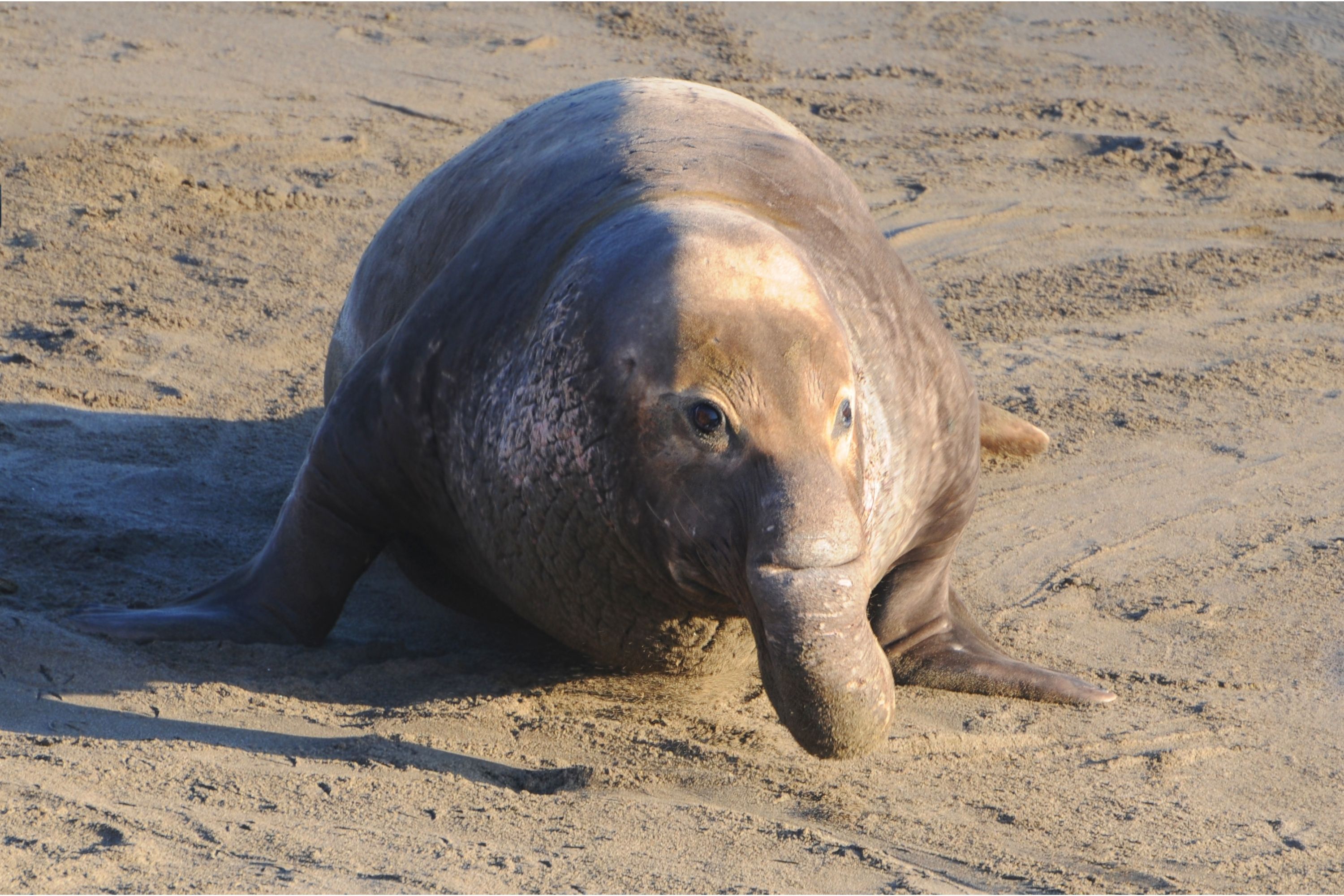Northern elephant seal
(Mirounga angustirostris)

Description
The northern elephant seal (Mirounga angustirostris) is one of two species of elephant seal (the other is the southern elephant seal). It is a member of the family Phocidae (true seals). Elephant seals derive their name from their great size and from the male's large proboscis, which is used in making extraordinarily loud roaring noises, especially during the mating competition. Sexual dimorphism in size is great. Correspondingly, the mating system is highly polygynous; a successful male is able to impregnate up to 50 females in one season. The huge male northern elephant seal typically weighs 1,500-2,300 kg (3,300-5,100 lb) and measures 4-5 m (13-16 ft), although some males can weigh up to 3,700 kg (8,200 lb). Females are much smaller and can range from 400 to 900 kg (880 to 1,980 lb) in weight, or roughly a third of the male's bulk, and measure from 2.5 to 3.6 m (8.2 to 11.8 ft). The bull southern elephant seals are, on average, larger than those in the northern species, but the females in both are around the same size, indicating the even higher level of sexual dimorphism in the southern species. Northern elephant seals typically live for around 9 years. Both adult and juvenile elephant seals are bar-skinned and black before molting. After molting, they generally have a silver to dark gray coat that fades to brownish-yellow and tan. Adult males have hairless necks and chests speckled with pink, white, and light brown. Pups are mostly black at birth and molt to a silver gray after weaning. The eyes are large, round, and black. The width of the eyes and a high concentration of low-light pigments suggest sight plays an important role in the capture of prey. Like all seals, elephant seals have atrophied hind limbs whose underdeveloped ends form the tail and tail fin. Each of the "feet" can deploy five long, webbed fingers. This agile, dual palm is used to propel water. The pectoral fins are used little while swimming. While their hind limbs are unfit for locomotion on land, elephant seals use their fins as support to propel their bodies. They are able to propel themselves quickly (as fast as 8 km/h) in this way for short-distance travel, to return to water, catch up with a female or chase an intruder. Like other seals, elephant seals' bloodstreams are adapted to the cold in which a mixture of small veins surrounds arteries capturing heat from them. This structure is present in extremities such as the hindlimbs.
Taxonomic tree:







